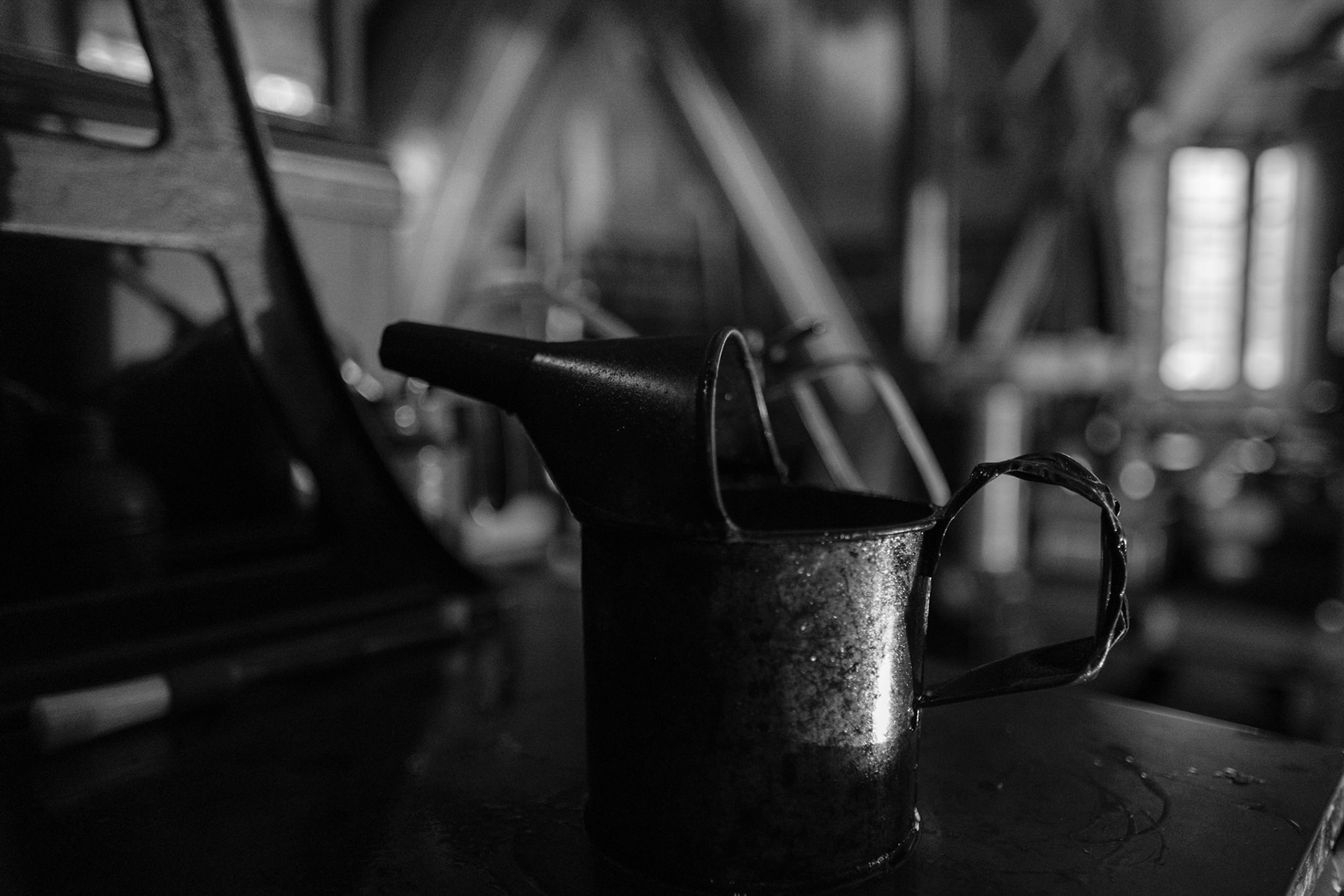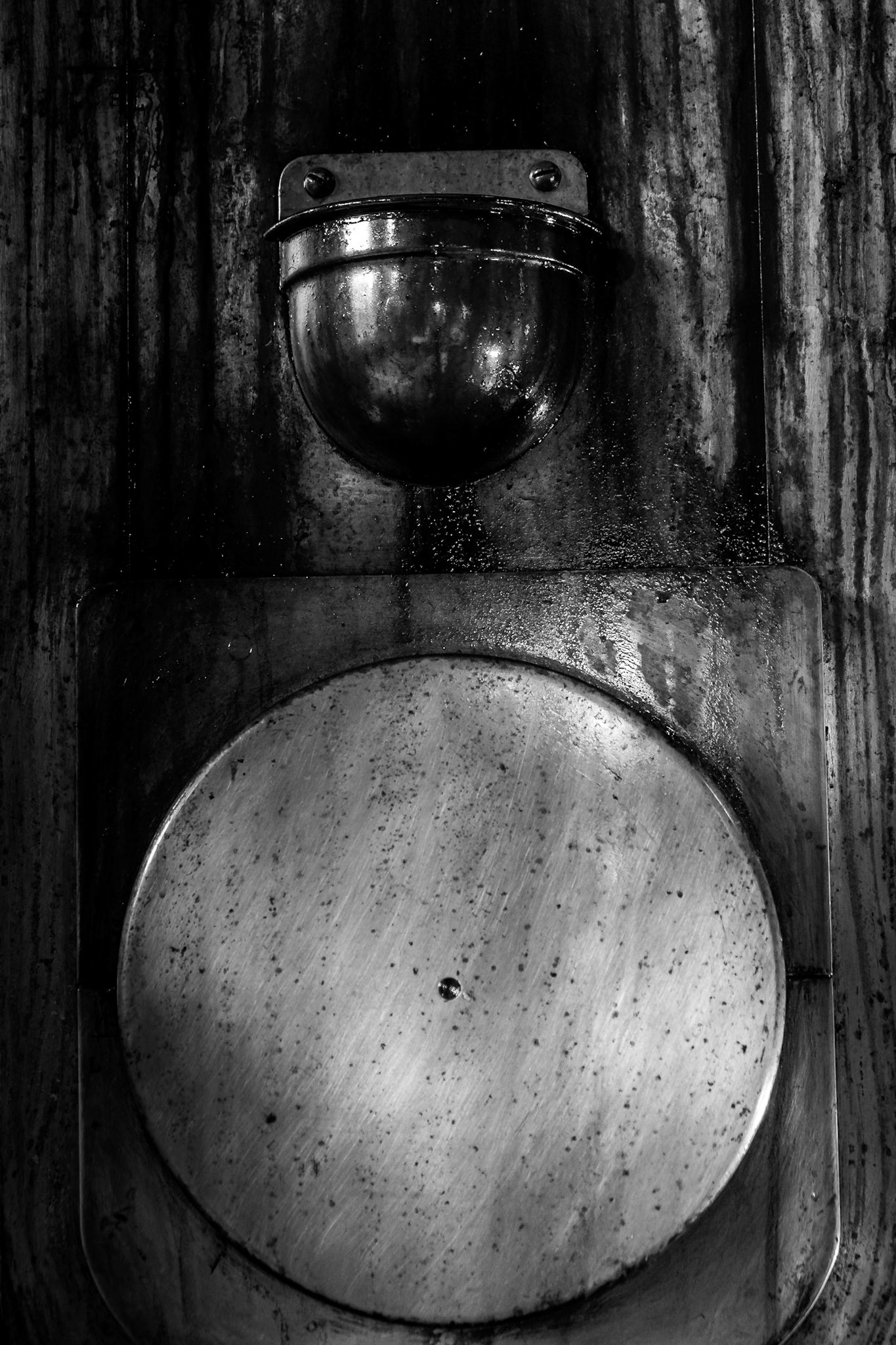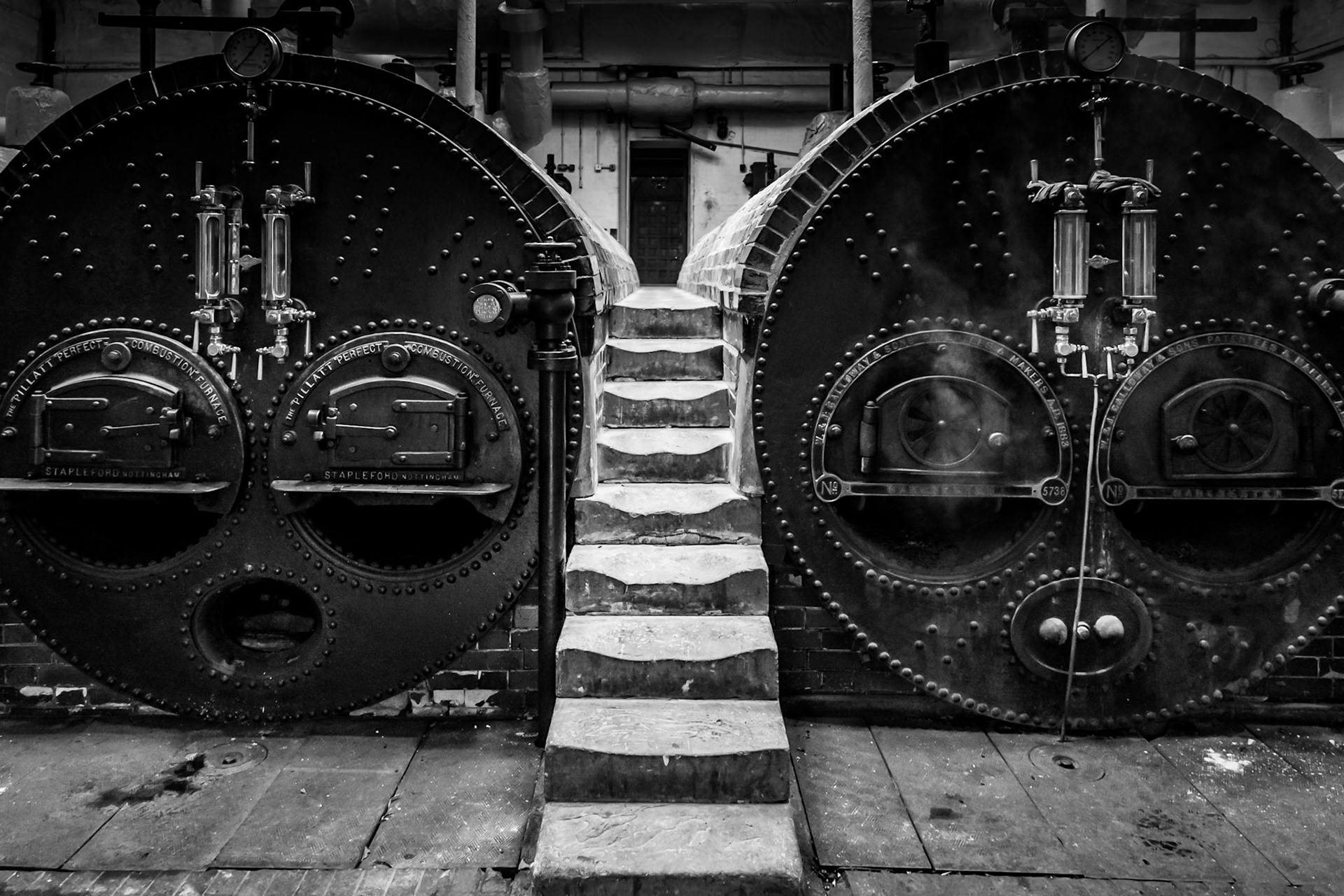As with a recent project exploring the industrial heritage of gas works, I was once again drawn to the compelling interplay of light—this time both natural and artificial—shifting across oil-darkened iron, polished brass, and the layered textures of machinery. In these pumping stations, light slips across the surfaces of immense engines, revealing the craftsmanship and care that shaped them. Shot in monochrome, the focus becomes not colour, but contrast—between shadow and shine, wear and precision, silence and remembered motion.
What struck me most was the sheer magnificence of these machines. Far from being purely functional or utilitarian, they speak of an era—particularly the Victorian period—when engineering was seen not just as necessary, but noble. The design and detailing of these engines reveal a deep respect for the role of technology in improving daily life. These were machines built with pride, intended to last, and even now, they retain a kind of dignity.
The Abbey Pumping Station in Leicester, which currently forms the core of this portfolio, is home to four massive beam engines built by Gimson and Company in 1891. Originally installed to pump sewage, they served the city until 1964, when electric pumps gradually took over. Not long after, the building ceased its original function. Remarkably, all four beam engines remain in place, restored and in working order—a rare and valuable record of industrial history housed within its original setting.
Elsewhere, Brede Pumping Station in East Sussex tells the story of water supply to Hastings and the surrounding region, beginning with steam-driven power in 1904. And at Papplewick Pumping Station near Nottingham, one finds an extraordinary sense of symmetry, not just in the grand engine house but continuing into the boiler room, where six coal-fired boilers are arranged with deliberate balance. These were not public buildings, yet the attention to design and proportion shows a deep commitment to excellence—often hidden from view for much of their working lives.
Wandering through these engine rooms today, there’s a palpable sense of the past—of the generations who kept these machines running, day and night. A worn handrail, a battered oil can, or a set of tools left on a bench as if someone had just stepped away for tea—all hint at the lives that once revolved around these engines. The weight of history hangs in the air, but so too does a quiet reverence.
This series is a photographic response to that reverence—a study of form, light, and time etched into metal and brick. It’s a tribute to the forgotten beauty of function, and to the people who built and maintained these monuments of industry.

Abbey Pumping Station
















